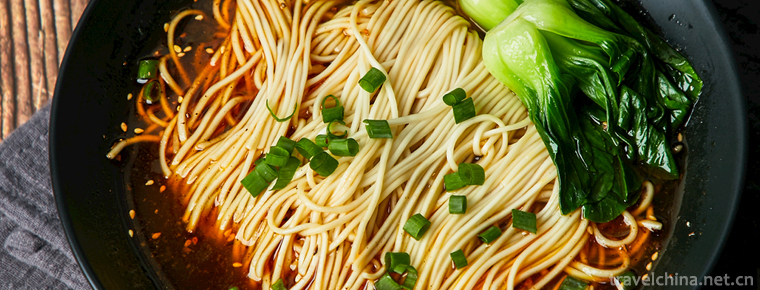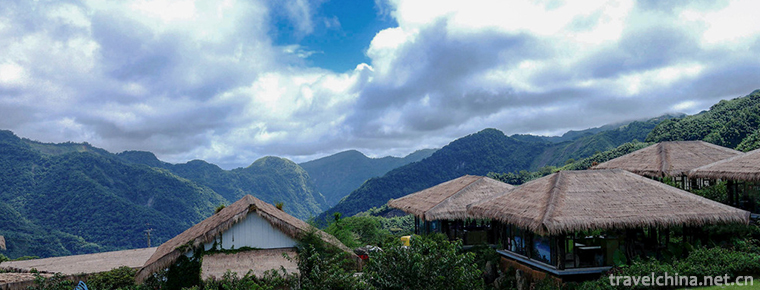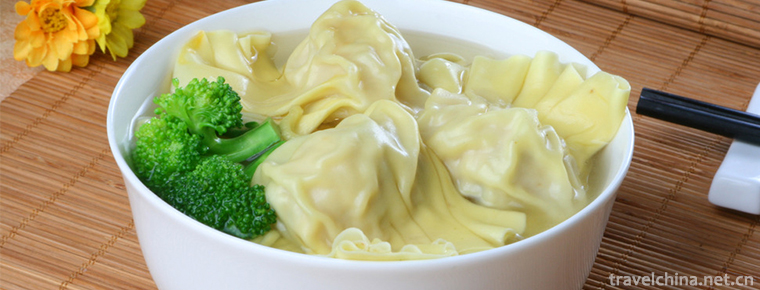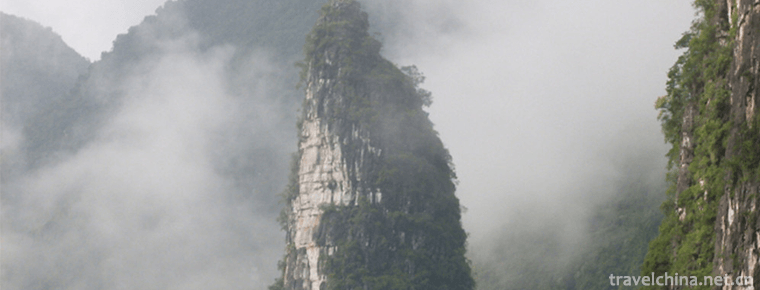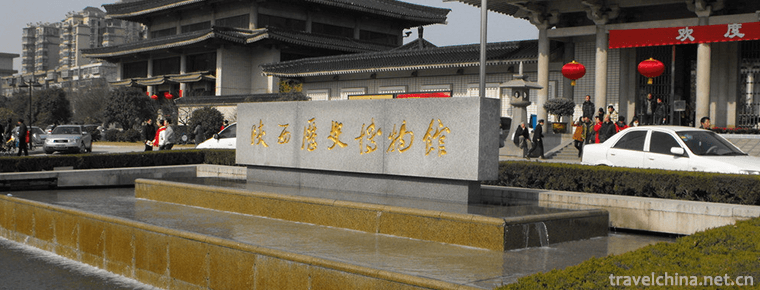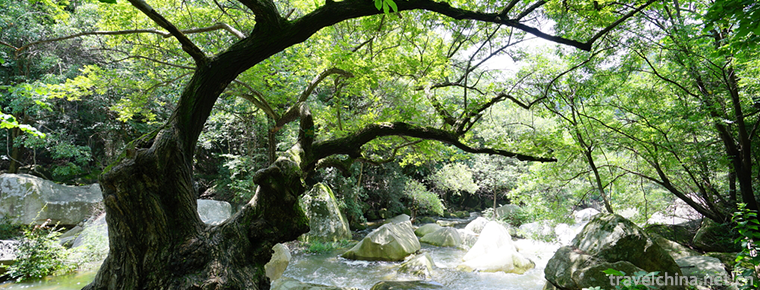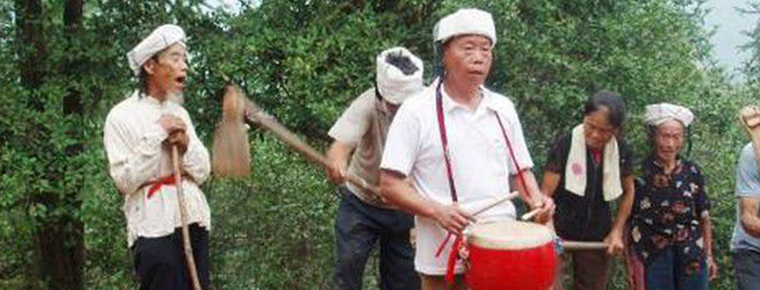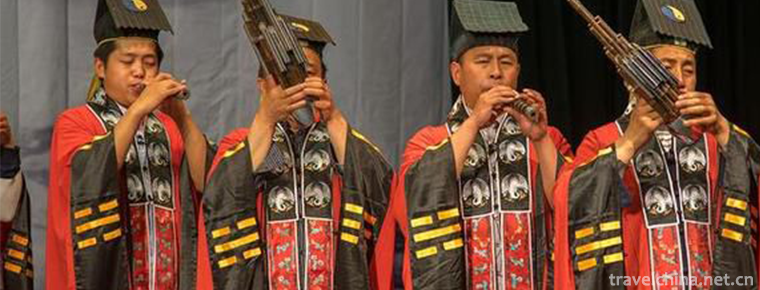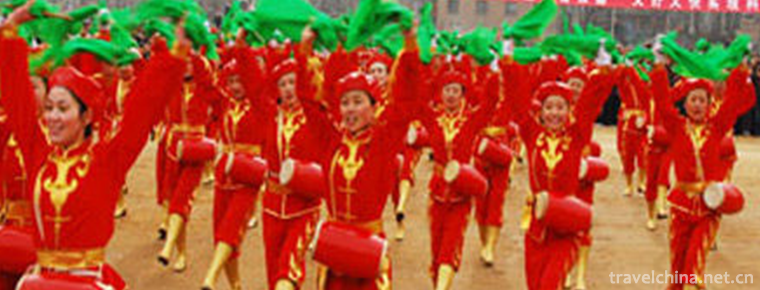Xunyang Folk Song
Xunyang Folk Song
Xunyang Folk Song is one of the local folk songs in Xunyang County, Ankang City, Shaanxi Province. It has a long history, rich melodies, various types and different styles. Like other folk art forms, it is a wonderful flower blooming in the brilliant folk art treasures of Xunyang and an indispensable important part of the profound folk cultural heritage of Xunyang. Part.
On November 11, 2014, Xunyang Folk Songs were approved by the State Council to be included in the fourth batch of national intangible cultural heritage lists.
historical origin
According to the study of the history of folk music, a large number of existing traditional folk songs originated from the mid-Ming Dynasty. Although Xunyang was built as early as the Western Han Dynasty, it had few mountain adults, remote areas, harsh natural conditions and underdeveloped economy. In addition to the wars of previous dynasties, until the mid-Ming Dynasty, there were still "political irregularities, the spread of bandits, the flooding of inbound and outbound, and the depression of Yijing". As the "Han Zhi" calls it, "It is hard to say that people who are not frozen and hungry are given food and drink by fire and ploughing water. (Preface to Rebuilding Xunyang County Records by Qianlong in Qing Dynasty). During the Ming and Qing Dynasties, the residents of the southern and Central Plains provinces migrated to Qinba Mountains one after another, which was the basis of modern population development in Xunyang. Immigration development has brought about the development of production and economic prosperity, but also promoted cultural exchanges. The traditional folk songs that can be collected and spread in the county should be produced and spread in Xunyang after the Ming Dynasty. More accurately, they should be popular in Xunyang in the late Qing Dynasty and the Republic of China. Since the founding of New China, the majority of musicians have attached great importance to the discovery, protection, collection and collation of folk art. Since the mid-1950s, musicians at all levels in the province and prefecture have come to Xunyang many times to collect and sort out Xunyang folk songs. Especially from the late 1970s to the mid-1980s, the nationwide integration of folk music has made remarkable achievements. In August 1981, there were seven volumes of Xunyang Folk Songs Integration, which collected 868 folk songs (including operas and minor operas), 34 of which were included in Shaanxi Folk Songs Integration Volume. For the inheritance and innovation of Xunyang folk songs, preserved valuable information, but also for us to learn, understand traditional folk songs, innovation and development of Xunyang folk songs provide a good condition.
artistic characteristics
basic content
Xunyang folk songs have a complete variety and various forms, which can be divided into four categories: chants, folk songs, minor tunes and folk songs.
Although there are not many chants in Xunyang folk songs, their practicability and expressiveness reflecting labor life are embodied, such as boatmen's chants and labor chants. The chant has regular rhythm, strong rhythm, simple melody, intense mood and heroic personality. It mostly adopts the singing form of a chorus, which is spectacular and intense. As a form of expression of music, it combines practicability with expressiveness organically.
Folk song is a folk song produced in the working life in the mountains, which expresses the feelings of workers freely and directly. The folk songs in Xunyang folk songs are also called "shouting tunes". They are often sung in the labor of cutting firewood, grazing, planting, or remotely conveying affection to distant people, and in the exchange of emotions such as answering and conveying emotions. Some are loud, loud and free in rhythm, mostly with free prolonged tones, commonly known as "chants". Some are funny and melodic. Yang, known as "war". There are two kinds of folk tunes in Xunyang folk songs: whether or not there are words or not. The non-words folk songs are simply lined with words, imitating the natural sound. There are two different voices when singing together. These folk tunes are melodious, slow and often sing in a high-pitched voice.
The minor is the largest number in Xunyang folk songs. It has regular structure and widespread spread spread. Most of the minor songs are segmented songs, with stylized lining, good at narration, diverse expression techniques, with tortuous and delicate characteristics. Their music is characterized by a tortuous way of expression. It often implies telling stories, expressing feelings for landscapes and sceneries, or expressing the inner meaning tactfully with the help of Legends of the ancients. The technique of expression is delicate, simple and regular. Melody range is not wide, generally within an octave, lining cavity, lining words, dialects, dialects, characteristics are obvious.
There are a few folk songs in Xunyang, most of which are sung in wine banquets, sacrifices and other activities.
basic feature
First, the content of Xunyang folk songs is rich and diverse. Xunyang folk songs reflect the production and life of the working people of all dynasties and express their emotions. They can be said to be comprehensive, multi-cornered and multi-level.
Secondly, the tunes of Xunyang folk songs are characterized by the transition from north to South and compatibility. Xunyang folk song belongs to the region of intersection and transition between North and south. In addition to the factors of immigration in the Ming and Qing dynasties, Xunyang folk song has both Jingxiang Chu tune and Bashu Sichuan tune, the voice of Jin and Henan in the central plains, the wind of Qinlong in the northwest, and it is different from the folk song of other counties in Ankang. Its tunes are mostly fine-tuned songs, as well as palace and business tunes. The melody lines are mostly smooth and concise, and the interval is mainly progressive, rarely jumping in, and the range generally does not exceed eight degrees. Xunyang folk songs are characterized by multi-style, multi-color, north-south transition and compatibility in style and color. The compatibility of Xunyang folk songs is also reflected in its combination with singing and dancing, speaking and singing.
Representative Works
Xunyang folk songs can be said to be omni-directional, multi-angle and multi-level in reflecting the people's living standards and expressing their emotions of the past dynasties. They include "Long-term Work Modalities" and "Torture" which show that the vast number of peasants work hard all the year round, but live a life of poverty; and "Shipmen's Names" which show the various types of seamen's work on the Hanjiang River. There are also "Wugeng Dining" which expresses their grief and indignation about the unequal social system, mulberry pole which describes the life and emotions of the husbandmen, and "Miss Sister's impatience" which also reflect the labor and interest of various craftsmen, as well as "Pulling Boards" and "Ten Tons of Girls". There are also street vendors and village salesmen.《 Selling Maolan, Selling Groceries, Selling Flat Food; There are Bamboo Forest, Putting Bamboo Row, Mowing Maize, Daisang Jujube, Cutting Yellow Pond, Picking Pepper, Pigging Grass, Sweeping Rice Farm, Tea Picking, Fishing, Weaving Cloth, Spinning Cotton, etc., which show various kinds of field work life.《 Water Song, Laundry, Cattle Moo, Sheep Melody, Pug Geteng, Picking up Dry Wood, Forging and Grinding Hammer, Kai Dyeing Workshop and so on are close to life and have everything. It's really like "Everything is in tune and the scenery blends". Of course, the love songs expressing the working people's yearning for a happy life and pursuing freedom of love occupy a considerable proportion in Xunyang folk songs. There are brave and unrestrained young men's impatience to miss their sister, picking up dried firewood, Osmanthus Ridge, Aijie Bai and Baopepper; there are also young and vigorous young women's exhortation Lang. 》 "Sending Lang" and "Watching Lang"; There are "Little Widow to Tomb" and "Torture" lamenting the unfortunate marriage; The Moon Showing Wood Tower","Firefly","Ten Hatreds","Ten Writings","A Tree of Sophora on Sister's Gate"and so on, besides expressing love songs of men and women, there are also places of love for nature. Enjoy the pastoral life of the "immortal tune", "orchid flowers", "Baiyuntou". There are also feelings of the cold world, summed up the life experience of the "stars in the sky more than a month unknown", "swing", "a body of orchids", "tea picking", "straw shoes rotten four tendons" and so on, praise the sage heroes, teach historical stories of the "Row" Wang, Reversed Curtain, Embroidered Purse, Twenty-eight Hours in Kunyang, etc.
It should also be pointed out that in different historical periods, folk songs, as the voice of the working people, produced and spread revolutionary folk songs in different historical periods, and there are many examples in Xunyang folk songs: the Red Army ballads "Sending Red Army Songs to Ten" and "Lazhuang Ding" circulated in Shuanghe County and the Red Army in the 1930s; "Good Coming of the Eighth Route Army", "Song of Women Participating in the Army", "Song of Girls Sentinel", "Five Thousand Years of Feudalism", "Living Yan King of the Old Society", "Song of Woman's Suffering", "Song of Reservoir" circulated along the Han River; and "Song of Water Conservancy" in the Great Leap Forward Period reflected the revolution of that time to varying degrees. Production and life have left a mark of history. The richness of the content and theme of Xunyang folk songs provides us with a cultural window to understand the past of Xunyang and show its history.
Inheritance Significance
Xunyang folk song has a long history, rich tunes, various types and different styles. Like other folk art forms, it is a wonderful flower blooming in the brilliant folk art treasures of Xunyang, and also an indispensable part of the profound folk cultural heritage of Xunyang. Protecting and inheriting Xunyang folk songs is of great importance to the promotion of excellent national culture, the study of Hanshui culture and the rich and colorful folk culture of Shaanxi Province, the display of local cultural characteristics, the service of the people's spiritual and cultural life, the stimulation of the people's passion for home and life, and the promotion of local economic and cultural development. Important significance and role.
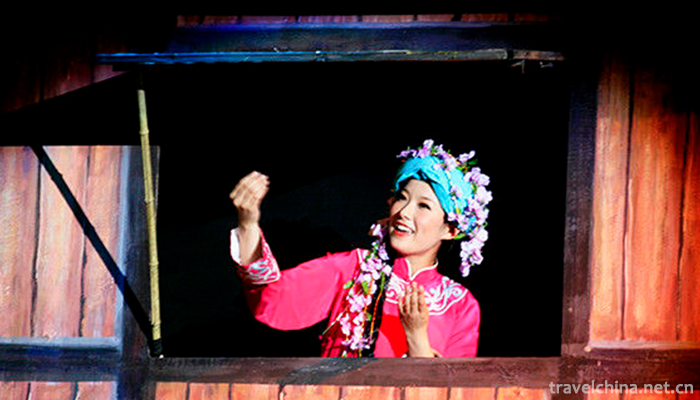
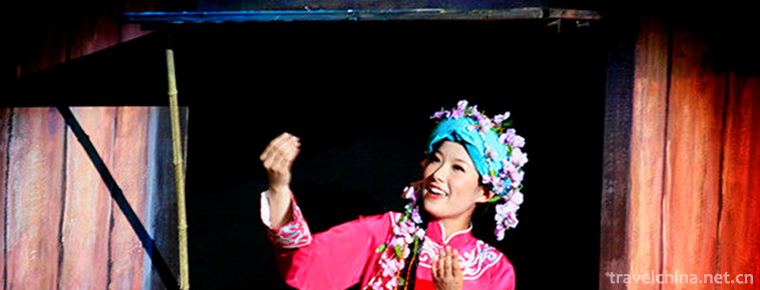
Xunyang Folk Song
-
Chongqing small noodles
Chongqing small noodles is one of the four characteristics of Chongqing
Views: 323 Time 2018-10-12 -
Ali Mountain
Mount Alishan, located 75 km east of Jiayi City, Taiwan Province, is located at an altitude of 2,216 meters. Its coordinates are 23 degrees north and 31 minutes east
Views: 299 Time 2018-10-30 -
Wonton Noodle
The wonton noodle is also called the bamboo rising face. It is a characteristic snack in Guangzhou. It originated in Guangzhou and Guangdong cuisine
Views: 242 Time 2018-11-14 -
The peak of unique beauty Duxiufeng
Duxiufeng is located in Jingjiang King's City in the center of Guilin City, Guangxi. It is an inseparable part of the King's City Scenic Area. Gufeng protruding, steep, magnificent, known as "a p
Views: 183 Time 2018-12-12 -
Shaanxi History Museum
Shaanxi History Museum, China's first large-scale modern national museum, the first batch of China's "AAAA" class tourist attractions, known as the "ancient capital pearl,
Views: 160 Time 2019-02-08 -
Longtan Valley Ecological Scenic Spot in Xixia
Longtanggou Natural Ecological Scenic Area is located in Shuanglong Town Huashan Village, Xixia County, the hinterland of Funiu Mountains, Henan Province. It is 30 kilometers away from Xixia County
Views: 239 Time 2019-02-25 -
Tea mountain chant
Yao Township Tea Hill Chant - spread in seven townships in Huangxikou area of Chenxi County, it is said that the chant song is sung when digging tea hill. When people dig tea hill
Views: 170 Time 2019-04-15 -
Sheng Guanyue in Jizhong
Jizhong Sheng wind music is popular in Jizhong Plain, that is, south of Beijing, west of Tianjin, north of Cangzhou and Dingzhou frontline nearly 30 counties and cities of traditional drum music varie
Views: 316 Time 2019-05-05 -
Wenzhou Drum Ci
Wenzhou Drum Ci, also known as "Quci" or "Blind Ci", commonly known as "Singing Ci", is the largest type of opera in southern Zhejiang Province, and also one of the main
Views: 212 Time 2019-06-28 -
Linear cavity
Line-tune opera, also known as Line-score opera, is an ancient traditional opera in Shanxi Province. It first appeared in the Han and Tang Dynasties, and developed greatly. It flourished in the Song D
Views: 169 Time 2019-07-03 -
Yicheng Flower Drum
Yicheng Huagu, according to historical records, existed during the Zhenguan period of the Tang Dynasty, reached its peak in the Ming Dynasty, and only in the Qing Dynasty did this activity have a clea
Views: 213 Time 2019-07-13 -
Deyang City Construction
In January 2020, the science and Technology Department of Sichuan Province and the provincial development and Reform Commission approved to support Deyang and other six cities to carry out the construction of provincial innovative cities.
Views: 298 Time 2020-12-14
